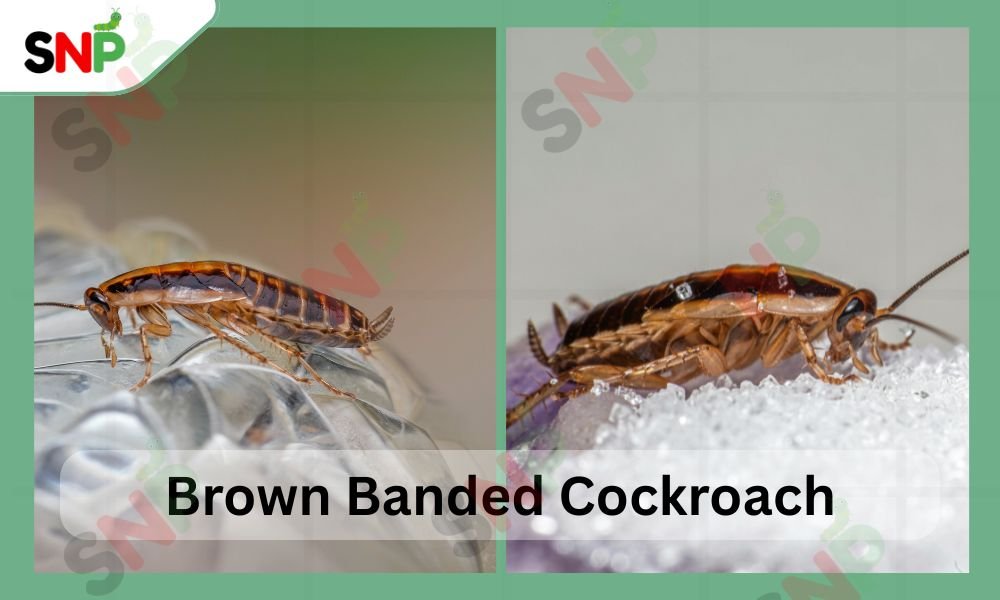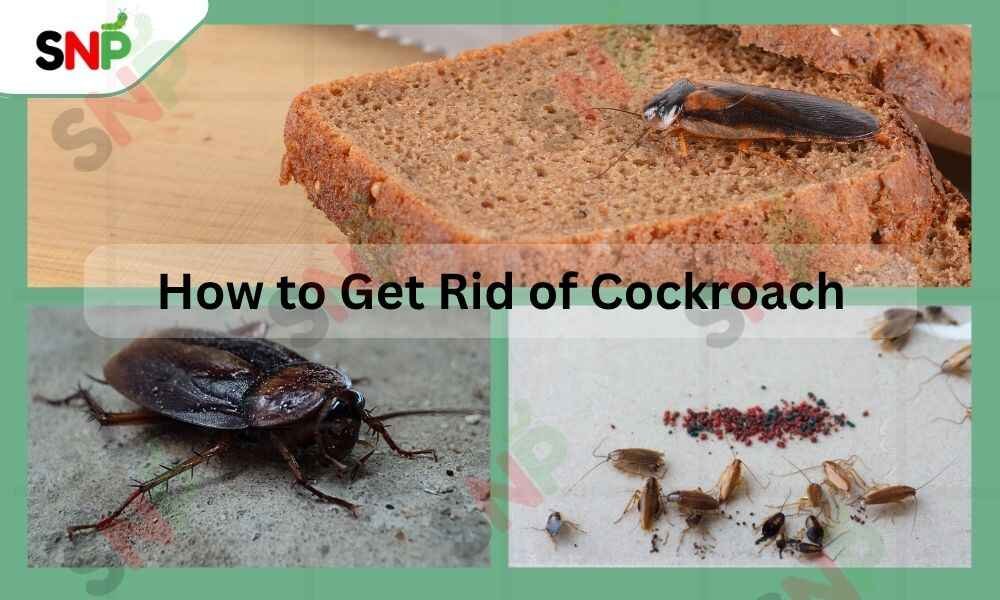Brown Banded Cockroach : Identification, Life Cycle, and Control

Every homeowner and business operator should understand the characteristics of brown-banded cockroaches in case they encounter pest problems. Brown banded cockroach weigh only a few grams and remain concealed while they become widespread house and apartment and commercial space pests in America. The following piece examines brown banded cockroach characteristics alongside their lifecycle patterns and feeding behavior and presents successful strategies for permanent elimination of brown banded cockroaches colonies.
What Are Brown Banded Cockroaches?
Back in the days, the brown banded cockroach (Latin name: Supella longipalpa) was seen as the smallest, with 10-14 mm in length. One of their noticeable features is the two light brown bands place on their dark brown body and wings, of which nymphs and female ones are especially distinct. Male individuals exhibit a slim figure and have wings that are longer than their abdomen, while females show the exact opposite. Normal cockroaches prefer humid and wet places, but the brown banded one is the one that likes warm and dry climates and is therefore frequently visible in living rooms, bedrooms, and high cabinets rather than kitchens or bathrooms.

The brown banded species were first brought to the United States from Cuba, and within a short period, they were everywhere in the country, from the north down to the south. Even now, they are still here, and they remain a problem for both the South and the North due to their ability to live in a less humid area of the in-house environment.
Brown Banded Cockroach Life Cycle
The lifecycle of the brown banded cockroach is about three months. In the brown banded cockroach life cycle, the flea is the intermediate host. They have a three-stage life cycle comprised of egg, nymph, and adult stages. We can tell the outcome of this arrangement from the fact that the female is the one who generates ootheca, which is the egg/capsule casing, each containing 10-18 eggs. Having carried the ootheca for approximately 24-36 hours, the female supposed to stay low and stick it to a hidden surface such as a piece of furniture, a wall, or even a ceiling.
Egg Stage:
It takes from 37 to 103 days for the eggs to receive some warm and new living creatures and to break the shell, depending on the environmental temperature around them.
Nymph Stage:
Nymphs go through 6-8 molts for 8- 31 weeks (the duration is dependent on the number of molts and takes 8-10 days for each molt) to acquire their adult-like appearance step by step including the typical marks of the elytra.
Adult Stage:
Adults have a lifespan of 13 to 45 weeks, and females can lay up to 14 oothecae in their lifetime, leading to a maximum of 600 offspring in a year.
The Brown banded cockroach life cycle is rapid, especially in warm environments that’s why infestations can spread so quickly if not treated.
What Does the Brown Banded Cockroach Eat?
The brown banded cockroaches is a scavenger that would consume virtually all forms of organic matter. The multi-choice diet of the brown banded cockroach consists of the following:
- Starchy materials: wallpaper paste, book bindings, stamps, and even the glue in furniture.
- Food scraps: pantry goods, trash, and crumbs.
- Non-food items: Nylon stockings, drapes, and dyes-often for the residues of body oils or skin flakes.
In regards to a habitat, the brown banded one opts for the dry sight with a temperature above 80°F. They prefer the following:
- Upper cabinets and closets
- Behind picture frames and wallpaper
- Inside furniture and electronic devices
- Near ceilings, away from water sources
Their ability to hide in high, out-of-the-way places makes them difficult to spot and control.

How to Get Rid of Cockroaches
After finding out about pests, you need to deal with their infestation in the best and effective way, and here are some points with the help of which you can deal with the problems and learn about how to get rid of Brown Banded Cockroach.
- Inspection: Look for signs in high cabinets, behind pictures, in closets, and inside electronics, also check for droppings.
- Sanitation: Keep your area and home clean, avoid leaving open food and the crumbs that may be the reason to cause cockroach infestation.
- Baiting: Use cockroach baits that contain hydramethylnon, fipronil, boric acid or abamectin in infested areas with brown banded cockroach. Put the baits in upper cabinets, behind the appliances, and other warm, dry positions.
- Dusts: Employ insecticidal powders, e.g. boric acid or diatomaceous earth, in cracks, voids, and under furniture, but, make sure that these are out of reach of children and animals.
- Professional Help: In the case of an overwhelming cockroach infestation it advised to call the professionals that use very focused treatments and also solve the problem in the long run. Regular cleaning and investigation are the answers to avoiding another brown banded cockroach invasion from happening.
Conclusion
The brown banded cockroach is a sturdy insect that successfully establishes itself in American homes and businesses, more so in warm, dry, and inaccessible sites. Their rate of reproduction and capability to eat many kinds of materials are the characteristics of these pests. By being taught the Brown banded cockroach life cycle, food, and habitat as well as by undertaking the quickest methods of how to get rid of brown banded cockroach, you can assure that your property is not the next target for the pests and at the same time you will enjoy a healthy environment.
If you are confident that the cockroaches have come back, don’t delay, act today to eliminate the pest. Your space is safe, as you have followed the precautionary measures to keep the brown banded cockroach hidden from the dangers that the insect may cause.
Related Posts
Oriental Roaches: How to Get Rid of Them in Your Home
The oriental roaches are unwelcome guests to many homeowners all over the United States of America. Commonly known as water bugs or black beetles, they may often live in moist areas and it is capable of making your comfortable place of residence a zone of bad experiences. The most crucial issue in the management of […]
How to Get Rid of American Cockroach
If you’re fighting the American cockroach in your house, the chances are that other people face the same problem. These stubborn pests, also known as American cockroaches, are widespread throughout the United States and have become very hard to deal with by families and businesses. It doesn’t matter if you only noticed a Baby American […]
Cockroach Life Cycle: What Every American Should Know
In pest control, it is half the battle to know your enemy. The Cockroach life cycle is an interesting yet essential topic for those who want to consider hygiene and health in their home, apart from being interest. Here in the blog, we will categorise the life cycle of cockroaches, how long do cockroaches live, […]
Quick Link
Services
